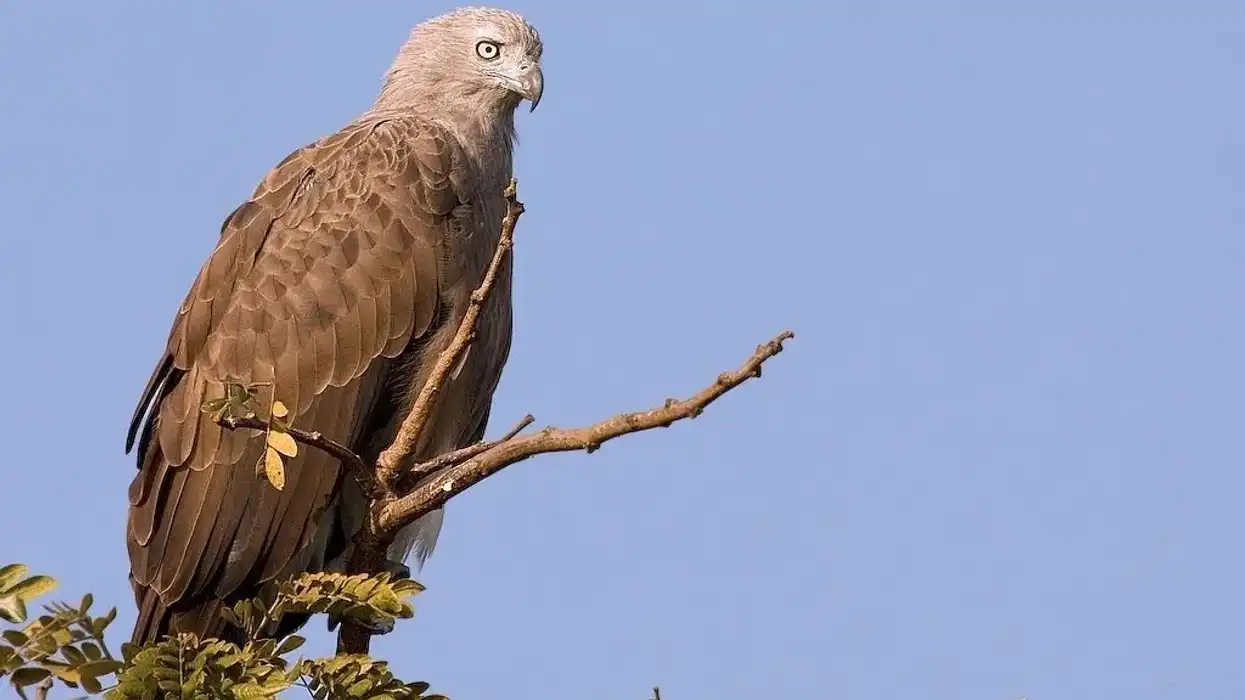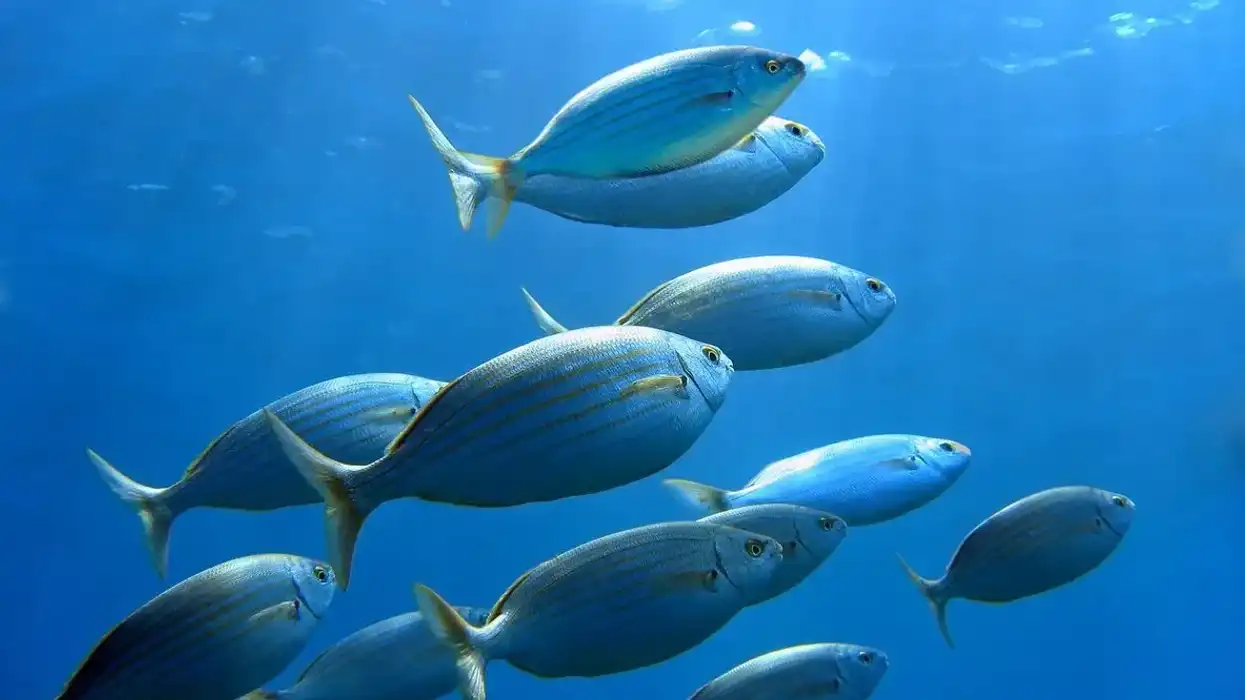The European flounder (Platichthys flesus) is native flatfish of European coastal waters. They are of the family Pleuronectidae. These fish are bottom dwellers.
For several distantly related species, the name flounder is used. All these species are in the same suborder Pleuronectoidei and four families.
These fish are considered a valuable food source, and also one of the most delicious dish species is the European halibut. There are over 500 flounder species. The ancestors neither swam nor did they lie on their side.
Their movements were usual, but they were easy prey for other fishes. As they evolved, they began swimming and lying on their side to escape predators. It was difficult to see and eat when on their side, so, for many, they tried to lower their eye for better vision.
Gradually, they learned to shift their eye to the top side. They have a brown and pearly-white colored body.
Their common name is a white fluke. They are very similar to plaice (Pleuronectes platessa) so, it is difficult to identify the hybrids. The data on the distribution of this species is scarce as the inshore fisheries and estuaries are poorly studied.
If you found these facts about European flounder facts informative, then do check black ghost knife fish facts and giant guitarfish facts.
European Flounder Interesting Facts
What type of animal is a European flounder?
The European flounder (Platichthys flesus) is a flatfish of genus Platichthys and order Pleuronectiformes. They camouflage well in their surroundings. They are nocturnal species and they search for food at night. During the day they lie on the seafloor and rest. They move deeper into the water in winter. They migrate to spawning grounds in spring.
What class of animal does a European flounder belong to?
The European flounder (Platichthys flesus) belongs to the class Actinopteriigy of animals.
How many European flounder are there in the world?
The data on the number of European flounder (Platichthys flesus) fish is not available. The distribution of the flounder population is around 30 million in the world.
Where does a European flounder live?
The European flounder (Platichthys flesus) is a native species of the eastern Atlantic Ocean and Mediterranean sea. This range extends through the White Sea, Baltic Sea, and the Barents Sea to the Black Sea, Greece, North African coast, and Turkey.
They have been accidentally introduced to the United States, Iran, and Canada through transport in ballast water. The European flounder habitat also includes a wide range of rivers in British isles like river Severn, river Dovey, and river Wyre.
What is a European flounder's habitat?
The European flounder (Platichthys flesus) occupies a wide range of habitat with coastal waters, muddy or shingle bottoms, and freshwater. They are found around a habitat around the low shore to a depth of 330 ft (100 m).
Unlike other Pleuronectidae, this species can survive in low saline levels in estuaries. They also regularly move into rivers and spend part of their life cycle in freshwater.
Who do European flounder live with?
The European flounder (Platichthys flesus) live alone and during mating, they live in pairs on the basis of their biology.
How long does a European flounder live?
The lifespan of this flatfish is around 20 years.
How do they reproduce?
This flounder species reaches maturity at the age of four years. These fish migrate to spawning grounds in spring. The spawning occurs between February and May and mostly later in the northerly latitudes.
Females release around a million lighter than water eggs. Males also release sperm that floats. Both the eggs and sperm float and the eggs get fertilized.
The larvae hatch after 6-11 days which depends on the temperature of the water. This flounder larva is plankton and hence moves to the coastal areas and migrates to estuaries and rivers using the selective tidal stream to transport.
Juveniles occupy the shallow waters, rivers, and estuaries. The Baltic Sea population of flounders breed in shallow water rather than deep. This species is called Baltic flounder (P. solemdeli).
What is their conservation status?
The conservation status of European flounders is Least Concern. This fish is used for human consumption.
There are a number of important fisheries found in the Baltic Sea and around Denmark and the Netherlands. The population of flounder in breeding grounds in the Gulf of Finland has reduced and now Baltic flounders dominate in population. This is due to pollution, changes in the environment, and habitat loss.
European Flounder Fun Facts
What do European flounder look like?

Males and females do not differ. They can only be differentiated by length when they become sexually mature. Their width is about half their length.
They have a flat body and they rest on one side. Their eyes migrate to one side and they are mostly right-eyed. However, 30% of this species are left-eyed.
They have a small mouth. Their upper part is pale brown or olive-grey color with reddish-brown spots. They have a pearly white underpart. They have short pectoral fins and the dorsal fins extend from the base of the head to beside the caudal fin.
The caudal fin is square-shaped. They have 53-632 soft rays. The anal fin runs through the length of the body and has 37-46 soft rays.
The caudal peduncle is around half the length of their tail. They have rough skin and large scales next to the lateral line. The base of the dorsal as well as the anal fins have prickly tubercles.
How cute are they?
This brown and white species is not considered cute.
How do they communicate?
This marine fish communicates through vocalization, color changes, and chemical release.
How big is a European flounder?
Flounders are of the length 24 in (61 cm). The data on their height is not available. The common mature adult length is 20 in (51 cm)
How fast can a European flounder swim?
During migrating to spawning grounds they swim at a speed of 3-4 mph (5-7 kph).
How much does a European flounder weigh?
The average weight of these marine fish is 31 lb (14 kg). The maximum weight for flounders is recorded to be 31 lb (14 kg).
What are the male and female names of the species?
There is no specific name given to the female and male species of this fish.
What would you call a baby European flounder?
There is no specific name given to the baby European flounder fish. They are usually referred to as juveniles.
What do they eat?
They hunt for food at night. The European flounder diet includes Bivalve molluscs and benthic invertebrates like small fish, shrimps, polychaete worms, and gastropod molluscs. This species are ambush predators.
Are they aggressive?
Yes, they are semi-aggressive.
Would they make a good pet?
No, they are not usually kept as pets.
Did you know...
In the western Baltic Sea, the hybrid from European flounders and European plaice is common.
The scientific name flounder is not a true name. Not every member in this order is a flounder species.
Demersal fish is the technical term given to bottom-dwelling marine species.
As they can change their colors to blend in with their surroundings, this flounder species is nicknamed as chameleons of the sea.
Most European flounder recipes involves grilling or boiling. They taste sweet and have a flaky and crumbling texture.
One of the main reasons for their population decline is overfishing as flounders are game fishes.
Are fluke and flounder the same fish?
Fluke is a flounder fish. It is another name given to the summer flounder. Fluke is also known as the northern flounder.
What is unusual about a flounder?
These fish look like normal fish upon birth. They undergo metamorphosis at around four weeks and transform into flatfish. When they begin to lie on one side, the eye on the bottom side migrates to the top, fading their bottom. When their mouth points up, the summer flounder faces left.
Here at Kidadl, we have carefully created lots of interesting family-friendly animal facts for everyone to discover! For more relatable content, check out these mandarinfish facts and gulf toadfish facts.
You can even occupy yourself at home by drawing one on our european flounder coloring pages.










